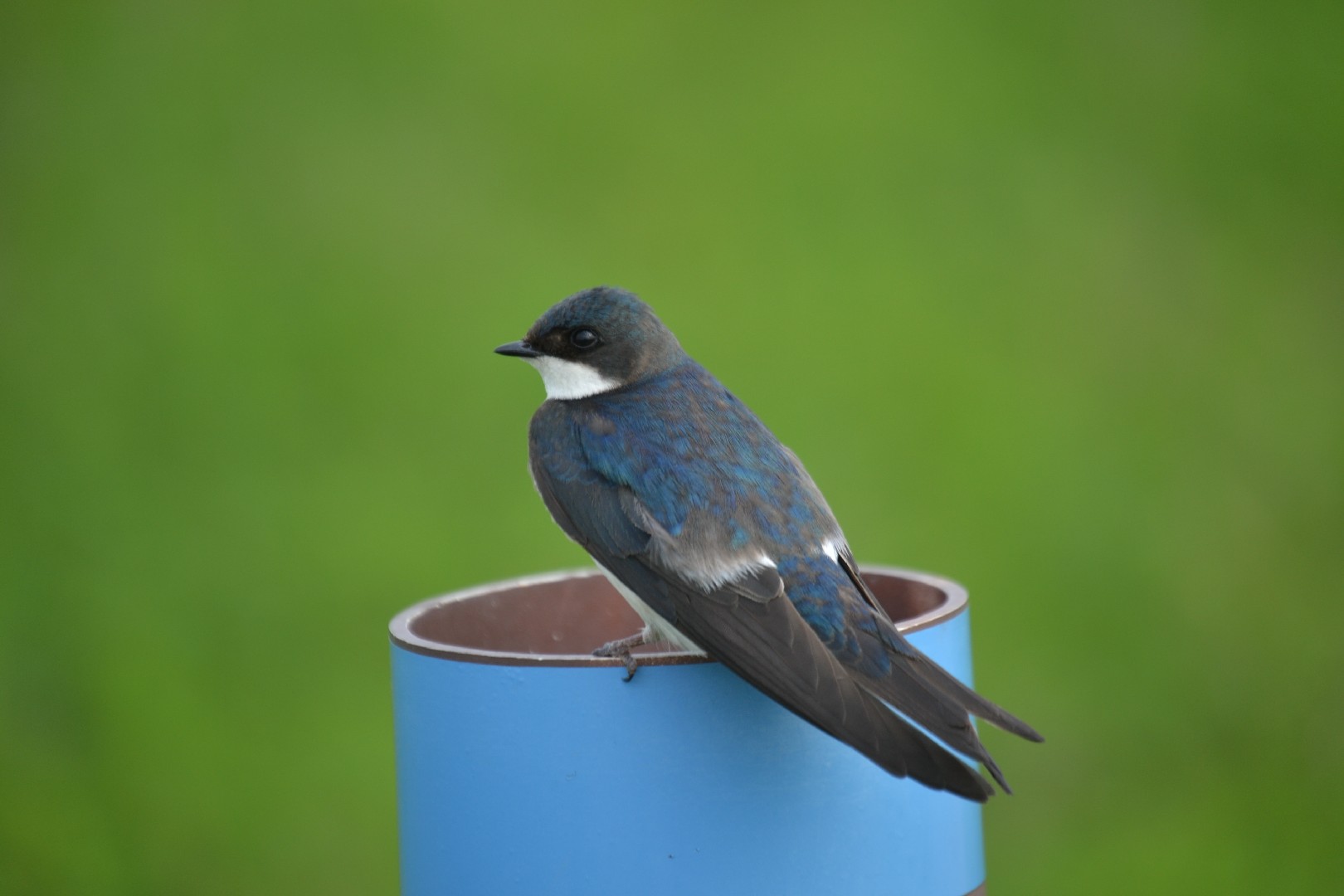Tree Swallow
A species of Typical American Swallows Scientific name : Tachycineta bicolor Genus : Typical American Swallows
Tree Swallow, A species of Typical American Swallows
Botanical name: Tachycineta bicolor
Genus: Typical American Swallows
Content
Description People often ask General Info
Description
One of the most common swallow species in North America, the tree Swallow is known to fly the highest. On the other hand, this short-tailed swallow is less aerobatic than its close cousins. When winter arrives, the tree Swallow, gathered in large flocks, is headed to South America. This highly territorial bird prefers natural nesting sites such as tree cavities, but it's sometimes seen in nest boxes.
Size
15 cm (5.75 in)
Life Expectancy
11 years
Nest Placement
Cavity
Clutch Size
4 - 7 eggs
Incubation Period
1 - 2 broods
Number of Broods
11 - 20 days
Nestling Period
15 - 25 days
Feeding Habits
Tree Swallow consume a variety of flying insects, supplemented by small animals, plant foods, and high-calcium items such as fish bones during breeding. They exhibit aerial foraging up to 50m above ground and 4km from nests, feeding chicks 10-20 times per hour. Diet is insect-heavy with flies constituting about 40%, but includes berries, crustaceans, and omega-3 rich aquatic organisms. They may forage up to 650m for calcium during shortages.
Habitat
Tree Swallow thrive in open or semi-open landscapes, often choosing areas proximate to bodies of water, like fields, marshes, shorelines, and wooded swamps, where insect prey is abundant. They have a strong preference for nesting in cavities within old trees or utilizing human-provided nest boxes. While tree Swallow favor lower altitudes during breeding, their migratory and winter habitats are similar to breeding grounds, minus the need for nesting sites. They roost in reed beds over water or other open areas and follow distinct flyways during migration, spanning from North to Central America.
Nest Behavior
When building nests, tree Swallow females predominantly gather materials nearby, shaping them over days to two weeks. Males may assist in feather acquisition. Timing of egg-laying varies, with both parents playing roles in caring for the young.
Nest Characteristics
Tree Swallow typically nest within natural cavities like standing dead trees or old woodpecker holes, as well as in human-provided boxes. Nests are made of grass, pine needles, moss, and sometimes synthetic materials, shaped into a cup lined with feathers from other birds, measuring 2–3 inches across and 1–2 inches deep.
Dite type
Insectivorous
People often ask
General Info
Feeding Habits
Bird food type
Bird Feeder Type

Platform
Sounds
Call
Recording location: United States
Call
Recording location: United States
Song
Recording location: United States
Behavior
Tree Swallow exhibit sociability through large flocks during migration and wintering. Daily, these agile fliers demonstrate a unique gliding ability amidst their swift movements. Interaction with their watery habitats includes a peculiar bathing ritual of skimming and shaking off droplets while in flight. Nesting behavior is distinctive; they playfully incorporate feathers into their nests, sometimes triggering aerial games among their flock. Although they form mating pairs, promiscuous tendencies occur. With a high fidelity to nesting sites, they may reuse locations with or without the same mate. They face threats from various predators and respond with coordinated defense tactics like swarming and alarm calls.
Distribution Area
The tree swallow breeds in North America. Its range extends to north-central Alaska and up to the tree line in Canada. It is found as far south as Tennessee in the eastern part of its range, California and New Mexico in the west, and Kansas in the centre. It occasionally breeds further south in the US, and vagrants are sometimes found in the Arctic Circle, the northern Pacific, Greenland, and Europe. The wintering range is from California and southwestern Arizona in the west and southeastern Virginia in the east south along the Gulf Coast to the West Indies, Panama, and the northwestern South American coast. While migrating, this swallow often uses stop-over sites, spending an average of 57 days at these areas during autumn. To get to its wintering range, it often uses one of three flyways: the Western flyway, west of the Rocky Mountains; the Central flyway, between the Rocky Mountains and the Great Lakes, stretching south into Eastern Mexico; and the Eastern flyway, from the Great Lakes east. When a swallow returns to nest, it usually does not change breeding sites. The breeding habitat of this bird is primarily in open and wooded areas, especially those near water. It roosts every night during the non-breeding season, preferring to rest in cane or reed beds over water, but it is also found over land and on trees and wires. Roosting sites are generally 100 to 150 kilometres (62 to 93 mi) apart. 
Species Status
Not globally threatened.
